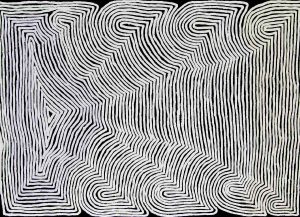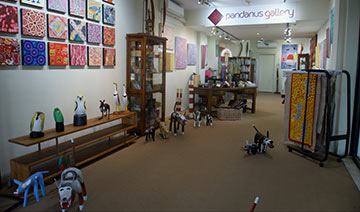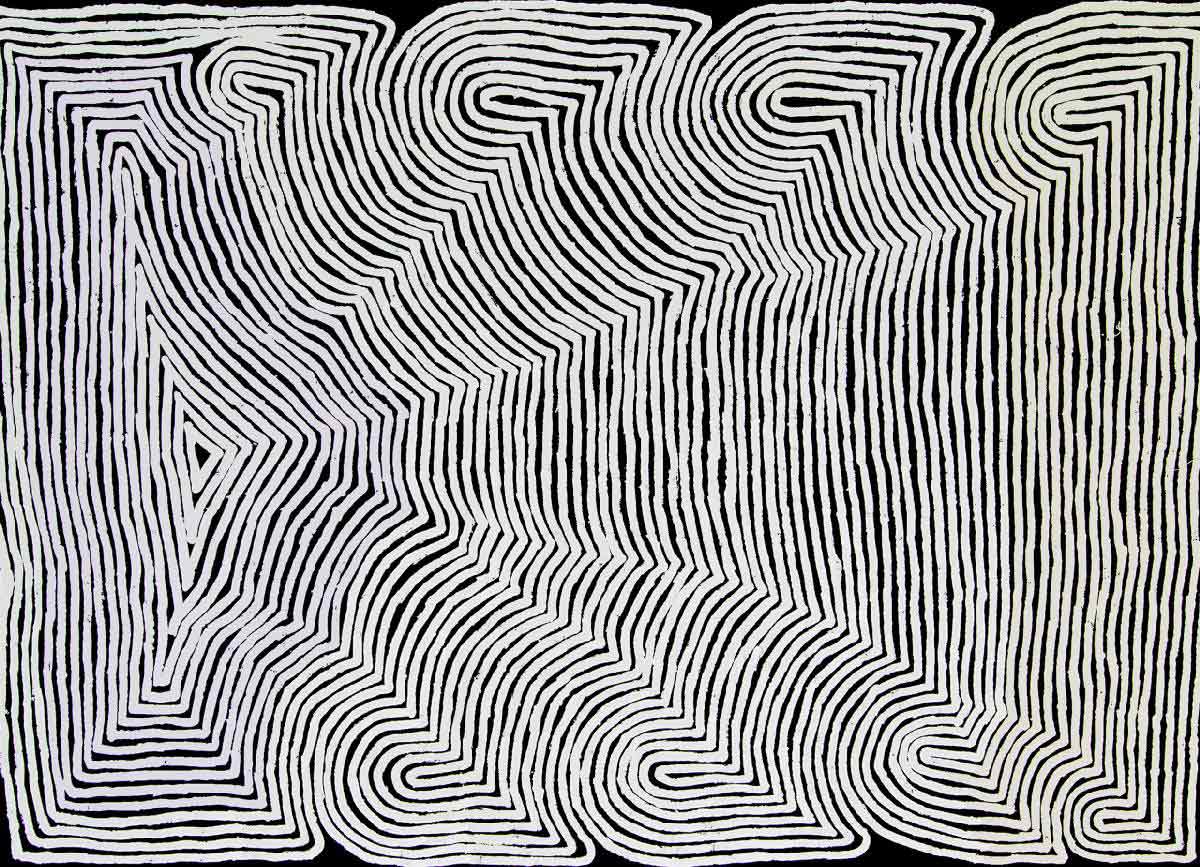Ronnie Tjampitjimpa Art For Sale
Pandanus Aboriginal Art proudly highlights a diverse collection of Indigenous artwork and artifacts from artists and craftsmen throughout the Indigeneous population of Australia. We strive to help expand the communication between remote artist communities of Indigenous Australia and the wider population, and in doing so showcase art from some of our most renowned talents and emerging artists throughout the country. We have an extensive collection of small to large paintings, jewellery, and artifacts such as clubs and boomerangs.
We have an interesting mix of artworks from Ronnie Tjampitjinpa who is an important figure in the contemporary Indigenous art movement. His work has been exhibited extensively throughout Australia, and his high quality works are highly regarded and collected nationally and internationally.
Browse the collection of work from this widely-regarded artist either online, or come into our Palm Cove gallery to see his works in person.
The Art of Tjampitjimpa
Ronnie’s style is structurally based on simple, geometric shapes to create visually evocative artworks. In his more recent works from the mid 2000’s he adopted a ‘drag dotting’ technique where the heavily loaded brush is applied then pulled a distance of up to 10 – 12 centimetres. This is applied in various formats associated with two of his earliest subjects, Water Dreaming, and the Tingari Cycle and later Bushfire Dreaming. The Tingari is a group of ancestral Creation characters who traveled the Central and Western Deserts, creating landforms and establishing the law and protocols associated with sacred ceremonies. There are multi-layered elements in the traditional painting of the Tingari, however to the uninitiated these aspects of the respective stories are withheld based on their secret/sacred nature.
Ronnie – like most of his Aboriginal compatriots from the Western Desert (he was born west of the Kintore Ranges c1943) – and his family were forced to leave their traditional country by a combination of drought and the impacts of settler Australians, including government policy to assimilate disparate Aboriginal language groups into areas such as Papunya, causing internecine issues and a most challenging survival environment under formal administration by the authorities.
In 1971, the man widely regarded as the ‘father of the contemporary Aboriginal art movement’ Geoffrey Bardon – who was the primary school teacher at Papunya – asked Ronnie to paint the school walls with a dreaming story to inform the Aboriginal children. He painted “Honey Ant Dreaming” on a large space that was not only a magnificent painting but an important milestone in the evolution of the whole Aboriginal contemporary art movement. It is noted the authorities destroyed the work a year later. Ronnie became a founding member of Papunya Tula Artists.
A key aspect of Ronnie’s style of painting was to make the lines work as representations of the subject matter. In Tingari Cycle paintings they presented squares and curves representing people, the land and the respective Dreamtime stories informing the works. His palette in these works ranges from subtle to powerful use of contrasting colours often evoking an equivalent visceral response.
His Water Dreaming paintings have evolved in a mix of strength and subtlety by virtue of the movements suggested by line, wave forms and a visually challenging colour palette – where the eye is drawn into and across the painting through pastel-like colour combinations that initially are challenging to accurately identify. These magnificent works visually evoke the apparent lack of form and life at mid-day in the desert with the incredibly rich and life sustaining content of the underlying subject sacred matter.
Tjampitjinpa was the winner of the 1988 Alice Springs Art Prize and his numerous exhibitions around Australia have been a source of great inspiration for other Indigenous artists.
Contact Us




